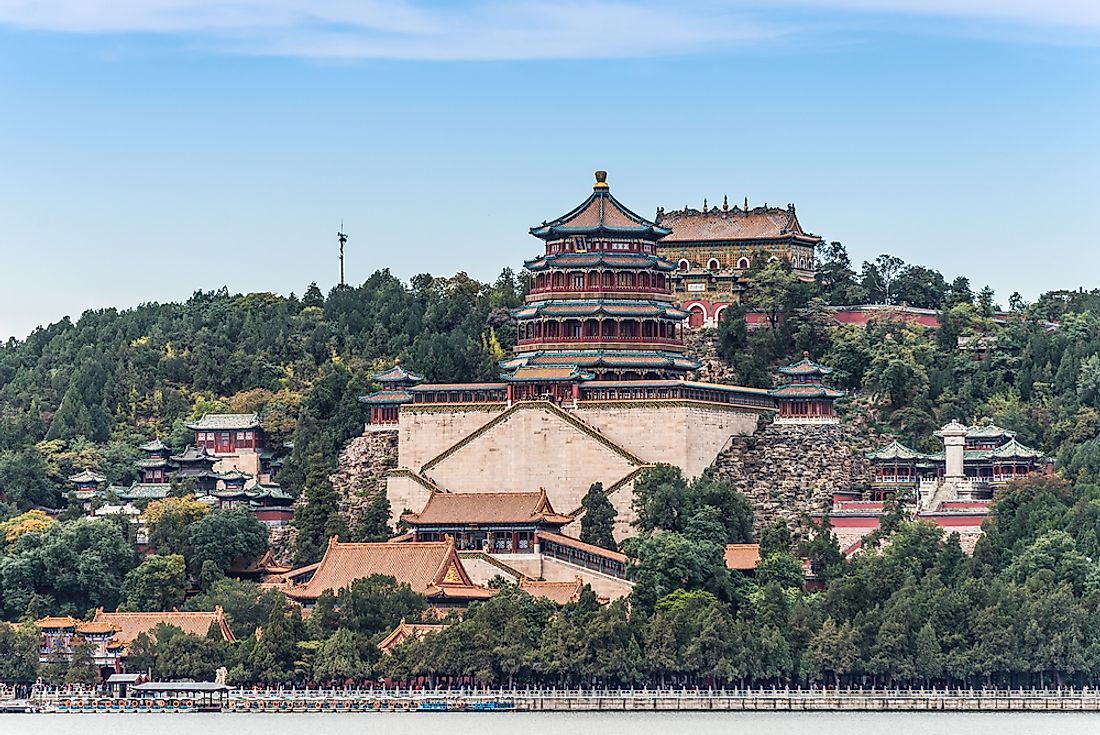Summer Palace - UNESCO World Heritage Sites in China

Traditionally known as the “Garden of Preserving Harmony,” the Summer Palace is recognized as a World Heritage Site, a designation it received from UNESCO in November 1998. The most outstanding features found in Summer Palace are the Kunming Lake and the Longevity Hill. Other structures found on the site include the Hall of Jade Billows (the original living quarters of the emperors during the Qing dynasty), Hall of Dispelling Clouds, the Long Corridor, the Hall of Benevolence and Longevity, and the Eastern Palace Gate. The Chinese government issued commemorative coins in honor of Summer Palace in 2006, acknowledging its impact in Chinese history.
History
The origin of Summer Palace predates the Qing dynasty and goes back to the 12th century during the Jin dynasty. The then emperor, Wanyan Liang commissioned the building of a palace in northwest Beijing on the Jade Spring and Fragrant Hills. The construction of the waterpark began in 1271, led by Guo Shoujing, a 13th-century Chinese engineer, and involved diversion of the waters from Sheshan Spring and drained to form the Kunming Lake or Western Lake, which was the city’s primary water reservoir. A palace was constructed on the banks of Kunming Lake in the 16th century during the reign of the Zhengde Emperor.
Later, in the 18th century, more water gardens were built around Beijing, with water being primarily sourced from the Kunming Lake. The 18th century marked the reign of Emperor Qianlong who is remembered for commissioning the deepening of the Kunming Lake, which was done by about 100,000 laborers.
The Second Opium War was a dark period for the Summer Palace as this was the time when the palace was damaged and looted by the British and French troops, in response to the killing of British envoys and their escorts by the Chinese. However, Empress Dowager Cixi ordered the reconstruction and expansion of Summer Palace between 1884 and 1895 in commemoration of her 60th birthday. However, limited funds resulted in the reconstruction work being focused on the dams surrounding Western Lake. The palace was renamed during this period, and became known by its Chinese name “Yiheyuan.” The peaceful period was interrupted by the outbreak of the Boxer Rebellion in 1900 that saw the Summer Palace being looted and suffering extensive damage.
Design
Ancient Chinese mythology inspired Summer Palace's design. The legend has it that in the East Sea existed three sacred mountains, Yingzhou, Penglai, and Fangzhang, which are represented by the three islands in the Western Lake; the Zaojiantang, Nanhu, and Tuancheng islands. Other structures found on the site are designed with essential features in the country. For instance, the Wangchan Pavilion imitates the Yellow Crane Tower while the Phoenix Pier represents Lake Tai.
Tourism
Summer Palace is open to the public and is a popular tourist destination in Beijing. Some activities visitors get to do while in Summer Palace, besides admiring the picturesque beauty, include fun-filled boat rides to the island temple.











